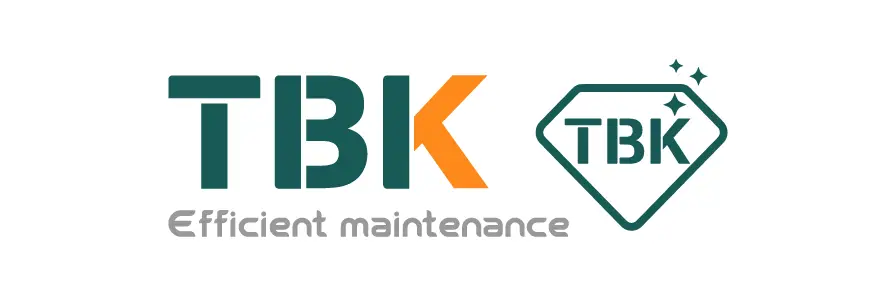A Technician's Guide: The Process of Using a Laser Machine for iPhone Back Glass Removal
When an iPhone's back glass shatters, repair shops are faced with a challenging and delicate task. The adhesive holding the glass to the frame is exceptionally strong. Traditionally, technicians relied on manual methods, but laser machines have become a standard tool for a more efficient and precise process.
Understanding how this process works, its safety, and how it compares to manual repair is essential for any professional technician.
Laser Back Glass Removal vs. Manual Repair
The primary difference between the two methods is how the adhesive is compromised. Manual repair uses heat and force, while laser repair uses focused light energy.
| Feature | Manual Repair Method | Laser Removal Method |
| Primary Tool | Heat gun, prying tools, chisels | Laser machine |
| Process | Apply high heat to soften adhesive; manually pry and chip away glass shards. | Laser beam ablates (burns) the adhesive layer beneath the glass. |
| Risks | High risk of frame damage, cuts, or heat damage to internal components. | Low risk to frame; requires fume extraction. Components must be removed. |
| Time | 60 - 120+ minutes | ~2 - 5 minutes for laser ablation |
| Consistency | Varies greatly by technician skill |
Highly consistent and repeatable
|
The Step-by-Step Back Glass Removal Machine Process
Using a laser machine involves more than just pressing a button. A precise workflow is required to ensure a safe and successful repair.
1. Preparation and Disassembly
This is a critical first step. To protect sensitive electronics, the technician must:
-
Remove the display assembly.
-
Disconnect and remove the battery.
-
Remove the logic board, camera systems, and the wireless charging coil.
The goal is to have only the empty phone housing (frame, camera bezel, and broken back glass) to place in the machine.
2. Machine Setup and File Selection
The housing is placed securely in the machine's work area. The technician must then select the correct schematic file for the specific iPhone model.
-
These "drawing files" map the exact location of the adhesive, telling the laser where to fire and, more importantly, where not to fire (like the metal frame or camera ring).
-
Integrated systems, such as the TBK-958N, streamline this by including a built-in computer that comes pre-loaded with these schematics for all mainstream phone models.
3. Focusing the Laser
The laser's focal point must be set precisely at the level of the adhesive under the glass.
-
Incorrect focus can either fail to burn the glue or, in the other direction, damage the phone's metal frame.
-
While many machines require manual focusing, some models (like the TBK-958N) feature a one-key auto-focus system, which simplifies this step and helps reduce operator error.
4. Laser Ablation
The machine runs its program, and the laser moves across the back of the phone, ablating the adhesive. The glass itself is mostly transparent to the laser's wavelength; only the paint and glue underneath are affected. This part of the process is very fast, often preparing a back cover in approximately two minutes.
5. Cleaning and Glass Removal
After the laser process, the adhesive is gone, and the glass (which is already shattered) can be removed easily with a simple prying tool. The frame is then cleaned thoroughly to remove any residue before a new back glass is applied.
Is Laser Removal Safe for iPhone Internal Components?
This is a common concern for technicians. The answer is yes, it is safe, provided the correct professional procedure is followed.
The "correct procedure" means disassembling the phone and removing all internal components, as described in Step 1. The laser energy and heat are targeted and localized, but they could still damage a battery or delicate logic board if they were left inside.
The process is designed to be used on an empty phone housing. When this procedure is followed, there is no risk to the phone's internal components.
The Versatility of Modern Laser Machines
While the primary function for many repair shops is back glass removal, the investment in a laser machine can serve multiple purposes. Many systems are engineered for versatility.
For example, beyond its main repair function, the TBK-958N can also perform detailed marking and engraving. This allows a shop to offer customization services, such as engraving logos or text onto metal, plastic, or leather. Some systems can even be fitted with optional rotary fixtures, expanding their capability to 360° engraving on cylindrical objects like cups.
FAQs About the Back Glass Removal Process
Q1: Do I need a fume extractor for a laser machine?
A1: Yes. The laser ablation process burns adhesive and paint, which creates smoke and fumes. A high-quality fume extraction system is required to maintain a safe and clean work environment.
Q2: Can the laser damage the metal iPhone frame?
A2: Not if the correct drawing files and focus are used. The schematic files are designed to avoid the frame. This is why using a machine with an accurate, up-to-date file library and reliable focus system is important.
Q3: Does the laser remove the Apple logo?
A3: The laser process ablates the paint and adhesive from the inside of the glass, which includes the logo. The new, replacement back glass will have a new logo on it.
Q4: Can one machine work on all iPhone models?
A4: Yes, modern laser machines are typically compatible with all glass-back iPhone models (from iPhone 8 to the 15 series and newer). The compatibility is determined by the software and the availability of the correct drawing file for that specific model.






























